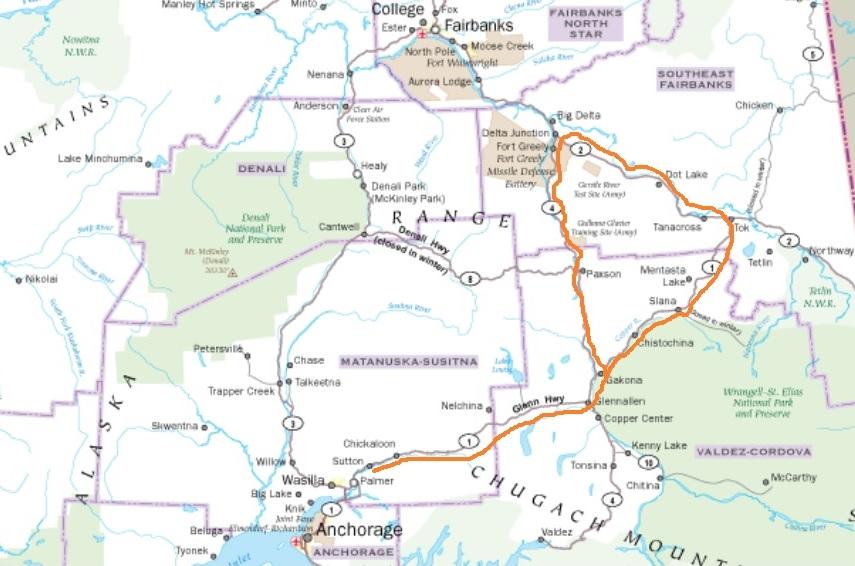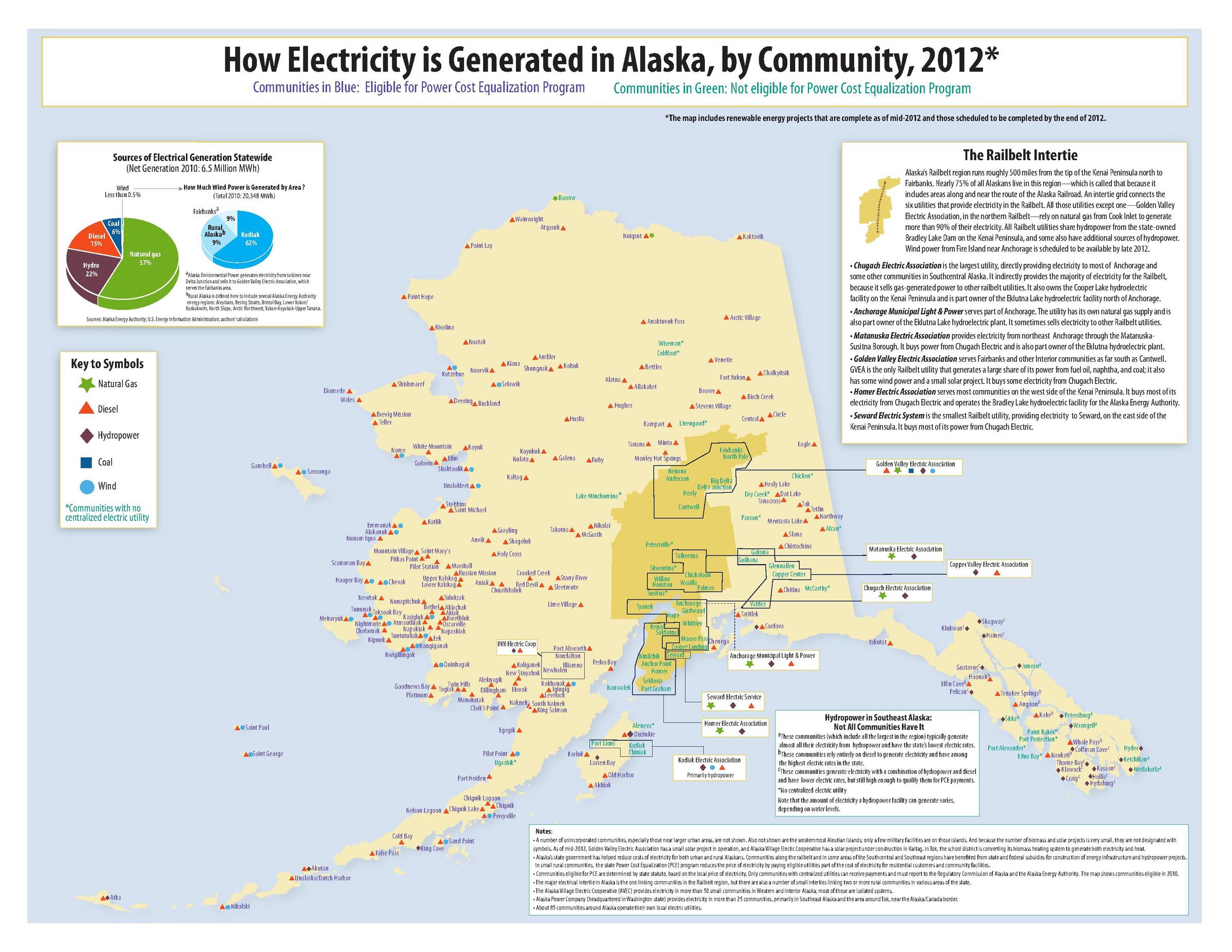
President Trump says he’s ready to move ahead this year on his campaign pledge to pass a trillion-dollar program to improve the nation’s infrastructure. That’s motivated officials with a Glennallen-based economic development organization and the electrical co-op that serves the area to dust off an old plan to build a 300-mile-long high-tension power line that would run from the Mat-Su Valley community of Sutton to Tok and Delta Junction.
Backers of the proposed Road Belt Electrical Transmission Line say the project would create a statewide grid that would improve the reliability of the Interior’s power supply and efficient use of powerplants. They say it would generate economic development, reduce the cost of power for many customers and enable greater use of electricity generated by such renewable sources as wind or hydro.
The only problem is finding the $300 million to $500 million the big power line is estimated to cost. But advocates of the project say they think they know where they can get that money: President-elect Donald Trump’s proposal to inject a trillion dollars into projects to fix the nation’s public facilities.
Trump declared in many campaign speeches that he’d push Congress to fund the initiative, a pledge he repeated as president-elect during a December 2016 speech: “I am going to ask Congress to pass legislation that produces one trillion dollars of new investment in America’s crumbling infrastructure.”
Jason Hoke, executive director of the Copper Valley Development Association, says Trump’s proposal has breathed new life into a nearly 30-year-old plan to build what’s now referred to as the Road Belt powerline.
“Right now, we have an administration that’s looking to build infrastructure,” Hoke said in an interview on Tuesday.
Another supporter of the project, Travis Million, chief operating officer of Glennallen-based Copper Valley Electric Association, says there’s renewed interest in the Road Belt project now that the president and congressional leaders have declared their support for a nationwide infrastructure program.

“A lot of this came back up again, because of the potential for some federal infrastructure money,” Million said in a recent interview.
Million says the plan evolved from proposals for a smaller powerline known as the Northeast Transmission Intertie Project that was studied in the 1980s.
“This project goes all the way back to 1989. There were some feasibility studies, and then again in ’94 and ’95,” Million said, referring to the project then known as the Copper Valley Intertie. “And at that time, it was only looking at a line from Sutton to Glennallen, and it was only to kind of serve the Glennallen-Copper Valley Electric area, where this is looking more statewide.”
This latest iteration of the project calls for construction of a 138-kilovolt powerline along the Glenn Highway from Sutton, in the Matanuska Electric Association’s service area, to Glennallen, which is served by Copper Valley Electric. Then a smaller 69-kilovolt line would be built along a short stretch of the Richardson Highway north to Gakona, then northeastward along the Tok Cutoff to the Alaska Highway, through Tok, which is served by Alaska Power and Telephone, and on to Delta Junction, in Golden Valley Electric Association’s service area. The final leg of the project would run from where GVEA’s power line ends just south of Fort Greely southward along the Richardson back to Gakona.
“There’s a lot of work that still has to go into this,” Million said.
Million says the project would help Copper Valley Electric cut the cost of generating power in the winter with diesel-fueled generators. In summer, the utility mainly generates with its network of hydropower plants.
“So our rates are fairly low in the summer, but they’re extremely high in the wintertime, just based on the cost of fuel,” Million added.
Golden Valley Electric engineering services manager Dan Bishop he says the new power line would enable the utilities to generate more electricity with hydro and other renewable-energy sources.
“There may be the opportunity to add additional hydroelectric generation,” Bishop said in an interview Tuesday.
Bishop says the additional generating capacity would improve reliability and provide backup power during outages. And he says more customers and demand will boost the economies of scale and put downward pressure on electricity rates.
“We can expect some economic benefits from that,” Bishop said.
Hoke says the project would boost economic development by providing electricity for mining and possibly pipeline pump stations along the route. He predicts it also would benefit the Interior’s military installations, which now buy most of their power from Golden Valley.
“The military needs more power and they need redundant power,” Hoke said.
Hoke says the state’s congressional delegation support the idea, as do legislators who represent districts the power line would pass through. He says the utilities that would be involved in the project also support it, as do Alaska Native organizations, like Tanana Chiefs Conference, and Native corporations, like Doyon and Ahtna.
“We’ve got 17 self-governing tribes behind this, 17 other communities behind this,” Hoke added.
Hoke says he’s working with Ahtna and Tanana Chiefs to help secure at least a million dollars in federal funding for a “reconnaissance study” that would update previous analyses and provide more accurate cost estimates. He says he’s working on a Jan. 22 meeting with representatives of the state’s congressional delegation and cabinet-level agencies to argue that the project should be included in any infrastructure program that emerges from Congress.
Tim Ellis is a reporter at KUAC in Fairbanks.




